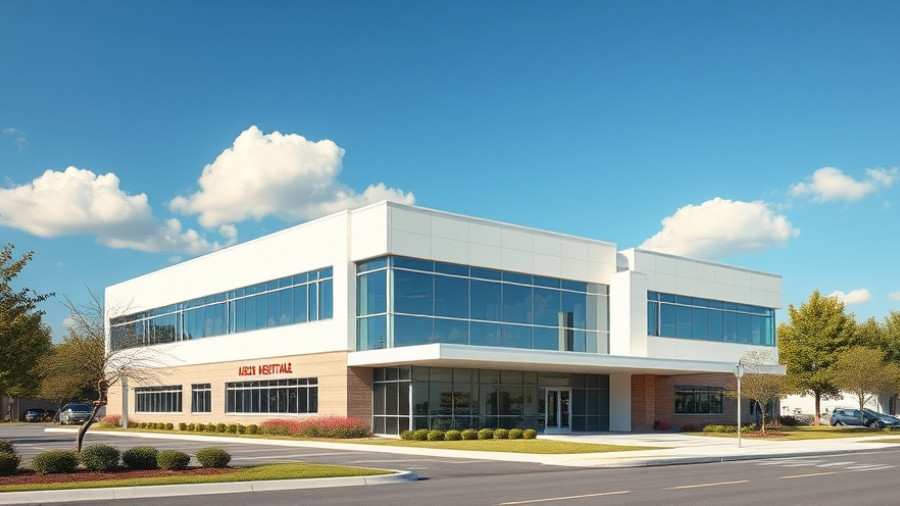
Revolutionizing Patient Care: The Smart Ward Concept
In a significant leap forward for healthcare efficiency, the Regency Specialist Hospital in Johor, Malaysia, has successfully implemented a groundbreaking smart ward inspired by Taiwan's leading hospitals. This initiative not only aims to enhance patient care but also to streamline hospital operations by reducing the time healthcare professionals spend on manual tasks. The recent statistics paint a promising picture: the smart ward has cut laboratory alert response times by 16% and reduced manual documentation by an astonishing 63%.
Background: Addressing Repetitive Tasks
The journey towards establishing a smart ward began when hospital management recognized that nursing staff was devoting substantial time to tedious, repetitive tasks. As CEO Serena Yong explained, this not only hindered the delivery of timely patient information but also limited the essential face-to-face interactions that foster compassion and empathy between caregivers and patients. Thus, the decision was made to pivot towards technological advancements aimed at alleviating this challenge.
The Unique Design and Implementation
Regency’s smart ward integrates advanced technology within its framework. Each element—from centralized dashboards to mobile applications—is carefully tailored to enhance nurses' efficiency while ensuring that patient care remains the top priority. Key components include:
- Automated Monitoring: Vital signs and body measurements are recorded and updated in real-time, enabling quicker assessment and response.
- Bedside Terminals: These terminals not only provide immediate access to patient data but also empower patients to participate in their care through interactive interfaces.
- Collaboration with Taiwanese Experts: Through partnerships with Chang Gung Memorial Hospital and Lanseed Medical Group, Regency adapted innovative solutions to better fit local healthcare needs.
Training for Success: Empowering Nurses
To maximize the effectiveness of the new system, Regency implemented a rigorous training program for its nursing staff. Yong highlighted the significance of these training sessions, which included:
- Daily hands-on training sessions that allowed nurses to learn at their own pace without neglecting clinical responsibilities.
- Annual refresher courses to ensure ongoing competency and engagement with the smart ward technology.
This commitment to training helps foster a culture of continuous learning and adaptability among caregivers, thus enhancing not only operational efficiency but also job satisfaction.
The Results: Enhanced Patient Care
Since its launch, the smart ward has undoubtedly changed how patient care is delivered at Regency. Key results highlight the efficacy of this initiative:
- Faster Response Times: With near real-time alerts for critical laboratory findings, the nursing team can now respond more promptly to urgent health issues.
- Improved Patient Collaboration: The introduction of bedside terminals has increased patient engagement, allowing them to request assistance and access educational resources about their health conditions in multiple languages, thereby catering to a diverse patient base.
- Increased Patient Safety: Automated alerts for risks such as falls or critical lab results have made the ward a safer environment for all patients.
Looking Ahead: The Future of Smart Wards
Regency Specialist Hospital plans to continue evolving its smart ward by expanding monitoring indicators to assess patient satisfaction, clinical performance, and staff well-being. This data will guide further improvements, ensuring that the smart ward continues to deliver meaningful healthcare outcomes.
As healthcare providers worldwide face challenges such as staffing shortages and an increasing patient load, the smart ward model offers a beacon of hope. It demonstrates how technology can enhance human connection rather than replace it, ultimately fostering safer and more patient-centered care.
Conclusion: A Call for Change in Healthcare Delivery
The successful implementation of smart wards in facilities like Regency Specialist Hospital exemplifies the potential for integrating technology in health care. As healthcare management administrators, industry stakeholders must consider adopting similar models in their facilities to not only keep pace with technological advancements but to elevate the standard of care provided to patients. The future of healthcare beckons for innovation that prioritizes both efficiency and empathy—two pillars essential for truly transformative care.
 Add Row
Add Row  Add
Add 




Write A Comment